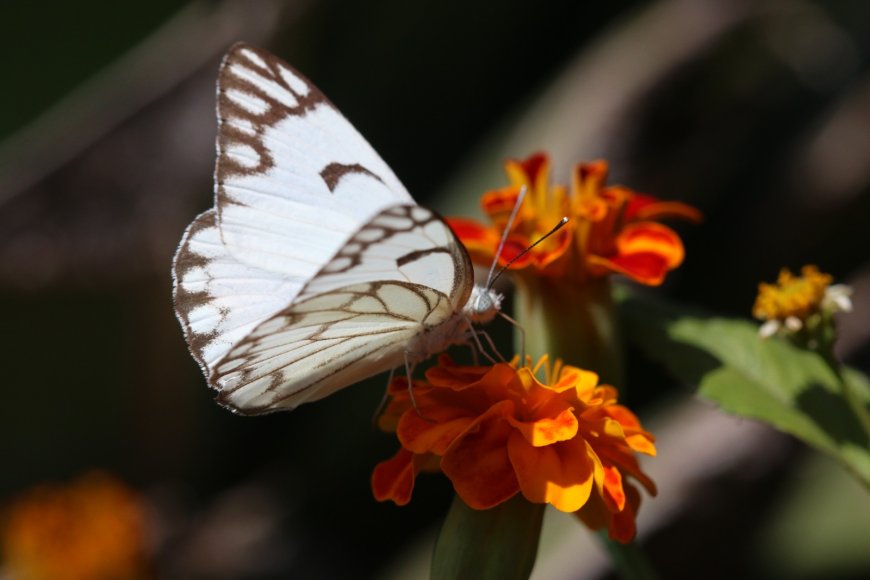Unprecedented Butterfly Migration Paints Kenya Skies in January

By Sharon Ambani
If you have been observant for the past few weeks, you might have noticed beautiful living canvases of vibrant colours created by the delicate motion of swarms of butterflies from one landscape to another. Unlike prior dormant, sunny, dry Januarys that we are used to, the unusual surge of these flamboyant insects delivers a visual treat and a sign of a flourishing environment.
Historically, in Kenya, the onset of the butterfly season usually occurs just after the long and short rainy seasons. However, this year is different. Their early occurrence in January in various parts of the country, especially in Nairobi, has left not only butterfly enthusiasts and scientists but also residents in awe.
Kenyans have gone on social media to express their wonder at the unprecedented natural phenomenon, with some going a little further to share some scientific knowledge they got from perusing the internet.
Dominic Rotich, for instance, posted on Facebook about seeing white butterflies in the sky.
"BUTTERFLY MIGRATION. Have you seen them in your compound or anywhere you are??" was captioned in a post Rotich made on Friday, 1st February 2024.
Many share his interest, including the Butsotso community elders from Kakamega County of Western Kenya.
According to Isaac Litali, they are used to seeing butterflies starting from April to June as they culturally signify the abundance of food.
"We normally see butterflies in abundance when we start harvesting beans. This signifies hope and celebration of farmers' efforts to produce food during planting when rain is abundant," says Litali.
"However, we are surprised to see butterflies in January. January is usually hot and dry. I believe this unique occurrence might have been brought by the rain experienced in the region for the last two months," he added.
While culturally, the onset of butterflies brings joy, Litali warns that having too many butterflies may signify the coming of misfortune in the community. He hopes that this will not escalate to any tragedy.
In addition to grasping the cultural perspectives, I also sought a scientific explanation to shed light on the unexpected surge in butterfly activity during this time of the year.
True to Litali's words, Entomologists attribute the abundance of butterflies to a combination of favourable conditions created by the just-experienced rainy season.
Kenya has recorded extraordinarily high rainfall across various parts of the country for the last three months. The Kenya Meteorological Department had predicted above-average rainfall with the possibility of the El Nino phenomenon.
Dr. Subramanian Sevgan, a Principal Scientist at the International Centre of Insect Physiology and Ecology (icipe), connects butterflies' early occurrence to these unusual weather patterns.
"Temperature and weather patterns play a critical role in the occurrence of biological processes, in this case, the seasonal survival of butterflies. Butterflies emerge during the warm season as they depend on external factors like the sun for warmth because they are cold-blooded. The rain also plays a role in their emergence. Rain supports the abundant growth of specific vegetation (nectar plants), which butterflies feed on. The rains also promote the growth of host plants for butterfly larvae, hence providing breeding sites for the butterflies and moths," says Dr. Sevgan.
He says the surprising emergence and migration of butterflies in January in Kenya may be because of the El Nino phenomenon observed this year.
"We have experienced rain in January as a result of stronger El Nino due to climate change. The conducive environment provided by the richness of biodiversity supported by the rainy season and the complex interaction of various ecological factors explains why we are witnessing the increase of butterflies at this time of the year," he states.
Dr Sevgan has also noted that an outstanding butterfly species, the brown-veined white butterfly (Belenois aurota), has been identified in various parts of the region, including Narok, Kitui, Kakamega, Nairobi, and Eldoret. The larvae of these butterflies breed on plants belonging to the caper family in the order Brassicales, related to mustards.

"It is a species widely known for its admirable seasonal migratory behavior, like the wildebeest migration in Masaai Mara, and studied in South Africa. In Kenya, their migration has been observed earlier in Mara and Eldoret, but rarely have I observed them in large numbers in Nairobi like I have seen them this time," he says.
An article done in 2022 by Jeniffer Fitchett, a Professor of Physical Geography at the University of Witwatersrand in South Africa, indicates that the phenological butterfly migration, commonly known as The Great Little White Butterfly Migration, consists of about 80,000 to 155,000 butterflies per hour that migrate through hundreds of kilometers from South Africa's Kalahari region to Mozambique in response to the search of food and moisture. However, not all butterflies survive the migration.

The article, however, states that the occurrence pattern of seasonal migration is interfered with by climate change as recent migrations suggest earlier onset than anticipated.
"Across the world, phenological events are occurring increasingly earlier because of climate change. The temperatures that used to signal the onset of spring for plants and animals are now occurring earlier in most parts of the world. Simultaneously, the timing and amount of precipitation are changing, too.
The Great Little White Butterfly Migration usually takes place between December and mid-January. Their November arrival this year (2022) is earlier than any of the dates in our record. The reason for the advance in timing relates to complex relationships with climate," states the article.
While numerous studies document the migration of this butterfly species in the southern part of the continent, more needs to be documented on their migratory behaviour and what triggers them in East Africa.
"The presence of this species in large numbers and their migration in Kenya during January is surprising to us as scientists. This triggers the need for further exploration to see if this will be a trend in the coming years," stated Dr Sevgan.
Moreover, he notes that further studies will help determine the impacts these unprecedented rains have on the emergence of butterflies and moths during this time of the year and their likely impacts on the ecological setup.







